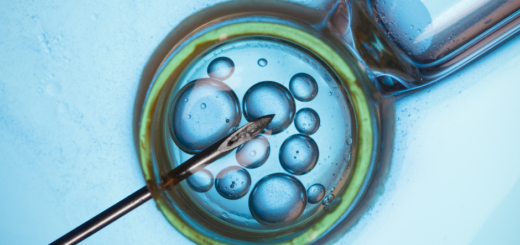Gender Assignment at birth, A Challenge For Parents
Biggest Assignment as a Parent- Raising a child with Genital Ambiguity
The decision to have a baby is the first step in a lifelong commitment of love, time, and financial resources and dealing with a baby with sexual ambiguity is devastating and painful .
Sexual ambiguity is a complex issue. An accurate diagnosis is essential and may take some time. Sex of assignment must be based not only on the underlying diagnosis and karyotype but also on the potential for adult sexual function, fertility, and psychological health. For these reasons, input from several specialties, including endocrinology, genetics, neonatology, psychology, urology, and an ethicist, is important. All members of the team must communicate adequately with each other. Parents must fully understand the medical recommendation for sex assignment and required therapy. They must wholeheartedly agree and support the assigned sex to avoid ambivalence, which can lead to gender confusion and psychological trauma for the child.
Parents may be dealing with two major categories of children presenting with this problem:
- Virilized 46, XX females –females look like male
- Under virilized 46, XY males- males look like female
The most common cause of sexual ambiguity in newborns is congenital adrenal hyperplasia secondary to 21-hydroxylase deficiency. Adrenal gland is situated above the kidneys and secretes several hormones.
As a general rule, gonadal tissue containing Y chromosomal material is at higher risk for development of malignancy.
When infant is born with ambiguous genitalia, and the sex of the infant is uncertain, what next ?
Accept the truth, cooperate with medical professionals as further testing is necessary to determine the infant’s sex. Explain all the relevant history during pregnancy that may help in a diagnosis.
Reference to more commonly understood birth defects may be useful. Several days may be necessary to complete the testing and a team will participate to make an accurate diagnosis and a considered recommendation.
Completion of the birth certificate should not be postponed, and sex assignment should not be delayed. Accept the sex assigned by Medical team.
What can cause genital ambiguity in newborn? Is it preventable?
Drug ingestion, alcohol intake, and ingestion of hormones during pregnancy can lead to such a situation. Hence Maternal history is particularly important. Progestational (androgenic) therapy used for threatened abortion or androgens for endometriosis during pregnancy should be avoided as far as possible. If the mother has signs of excessive androgen or parental family history for occurrence of ambiguity, neonatal deaths, consanguinity, or infertility it can lead to sex disorders.
What is the extent of problem?
The most common cause of a virilised female is congenital adrenal hyperplasia (CAH). Virilisation may also be caused by maternal ingestion of androgens or synthetic progesterone during the first trimester of pregnancy. The measurement increased ACTH in blood is useful for making a diagnosis. These babies have female chromosomes with male outlook, however they do have ovaries and uterus like any other female child.
An undervirilized male (previously called male pseudo hermaphroditism) refers to a male with female external genitalia. The abnormality may range from various grades of feminisation to a completely female phenotype. Such disorders result from deficient androgen stimulation of genital development and most often are secondary to testosterone biosynthetic defects. These boys have male chromosomes with female outward looks.
How the condition is diagnosed? What are the tests done?
The diagnosis of the origin of sexual ambiguity can rarely be made by examination alone, it is always combined with a series of tests. Tests are directed to determining the presence or absence of palpable gonads (presumably testes), the presence or absence of a uterus, and the karyotype to allows classification of the infant as a virilized female, an under virilized male, having a disorder of gonadal differentiation, or having one of the
unclassified forms. Certain forms of CAH may cause dehydration, hypertension, or areolar or genital hyperpigmentation. Turner’s stigmata may be present, including webbed neck, low hairline, and edema of hands and feet.
Radiographic studies are necessary to find out structural abnormalities like the presence of gonads and other reproductive structures. Pelvic ultrasound examination by qualified and experienced personnel should be performed as soon as
possible to look for a uterus. The presence of gonads, fallopian tubes, and a vaginal vault may also be determined. If necessary, a genitogram may be performed to see the lower reproductive organs like presence of vagina and its extent.
Because 21-hydroxylase deficiency is a common cause of sexual ambiguity, the level of 17-hydroxyprogesterone (17-OHP) should be assessed in all such infants who do not have palpable gonads. Screening of newborns for CAH with measurement of a 17-OHP level is now mandated in all 50 of the United States and in many countries throughout the world. A karyotype is essential and must be obtained expeditiously. Buccal smears are absolutely contraindicated because they are inaccurate. In many laboratories, a karyotype can be completed within 48 to 72 hours.
Defects in testosterone synthesis can be diagnosed by low testosterone levels with defect in its synthesis pathway (from the level of enzymes block either in the adrenal or in testicular pathways).
What is the role of parents in upbringing?
The decision about sex assignment must be carefully made, taking into consideration each “level” of sex determination. Sex assignment also depends on fetal sex hormone exposure, the potential for adult sexual function, and psychological and cultural considerations. It is vital that parents completely understand and support the decision because ambivalence about sex of rearing may result in gender confusion and psychological trauma.
Virilized females are usually assigned a female sex. They have normal ovaries as well as uterus and vaginal structures and, with surgical correction and steroid replacement, can have normal sexual function and achieve fertility. However, severely virilized females should be assigned a male sex.
Undervirilized males are often infertile, and sex assignment has usually been based on
phallic size. Adult social and fulfilling sexual function should be the primary goals of gender assignment. If male sex assignment is contemplated, a trial of depot testosterone (25 mg every 3-4 weeks) for 1 to 3 months indicates whether phallic growth is possible.
In patients with gonadal dysgenesis and Y chromosomal material, gonadectomy is necessary, and fertility is not possible. Internal duct structure is also frequently deranged. Small phallic size usually leads to a female sex assignment.
True hermaphrodites who have a unilateral ovary and uterine structures may have spontaneous puberty and normal fertility and may be raised as females. External genital size and structure may allow male assignment, but more commonly, external genitalia are poorly virilized, and affected infants are assigned a female sex.
What are the future prospective regarding marriage, child bearing etc.?
Parents must understand that having normal sexual performance does not correlate with reproductive ability. However, physicians always give preference to sexual ability than childbearing probability. Our aim in parenting is to give the child a sexual identity which may contradict the genetic makeup and at places may force us to sacrifice the gonads for future life.
We have much to learn about gender identity and must consider which decisions may be made later than previously thought (e.g., surgery). Some surgical interventions are cosmetic, and some affected patients have expressed the wish to make the decisions in adolescence or adulthood. This field challenges many of our perceptions of sex and gender and our role as physicians. Although the infant with genital ambiguity presents a medical and social emergency, decisions should be made carefully, cautiously, and with all necessary biochemical and anatomic information available. Most important, the multidisciplinary team approach must involve the parents in an open and honest
discussion of the options. In the end, it is the parents who come first in decision making on sex assignment.
A male child be with complete androgen insensitivity should be raised female. Complete androgen insensitivity usually does not have suspicion of ambiguity in the new born period or early childhood. Affected children grow as normal females until puberty. They feminize with normal breast development at puberty because high levels of testosterone are aromatized to oestrogen, but they have no pubic or axillary hair and no menses because they lack uterus and ovaries. Gender identity is usually female. Patients come to medical attention because of lack of menses in adolescent period.
The diagnosis is therefore frequently made when patients are in their middle to late teens. If diagnosed early the testes should be removed to prevent cancer and oestrogen therapy should start early. This therapy helps in developing the vagina and performance as a female is not compromised.
Undervirilized males traditionally, infants with 5-alpha-reductase deficiency were raised as females until puberty, then continued life as males, and, in some cases, achieved fertility. More recently, however, the condition has been recognized early in life, and affected males are now raised from infancy as boys.
Virilized females are usually assigned a female sex. They have normal ovaries as well as
Uterus and ovaries and, with surgical correction and steroid replacement, can have normal sexual function and achieve fertility.
However, severely virilised females should be assigned a male sex. They can perform sexual function as a male but cannot reproduce as they don’t have male gonads.
Patients with Y-related chromosomal or genetic disorders that cause mal development of one or both testes are said to have gonadal dysgenesis. They present with ambiguous genitalia and may have inadequate virilisation, uterus and vagina may be present in such children. The Y-containing dysgenetic testes are at risk for developing cancer and must be removed better reared as females.
How to deal with infertility in such cases?
Fertility potentiality is decided by karyotyping, presence of gonads and presence of uterus and vagina. Accordingly, they can go for gamete donation programme or surrogacy. The decision has to be taken after discussion with the couple.





















